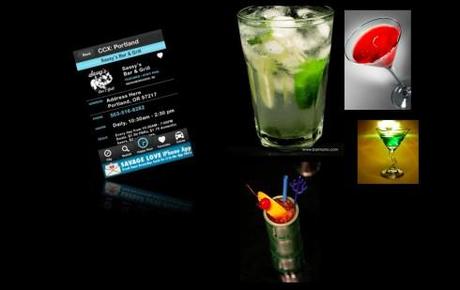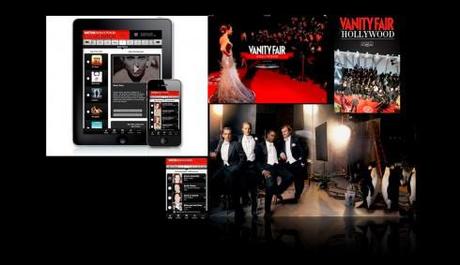This is the weekend edition of TheMarioBlog and it will be updated as needed. Our next new blog post will be Monday, Feb. 20.
TAKEAWAY: “There’s gold there in them newspaper/magazine libraries” and editors and publishers need to tap into them now that mobile telephones and apps provide the platforms for them to have a second life. One US newspaper is making happy hour happier for its users by utilizing the information about bars it already had.

Newspapers are depositories of treasured materials, from photos to stories to the history of the towns and regions they cover.
With today’s tablets and mobile telephones, these items can get a new life, become useful to many and provide revenue.
One of the elements of my tablet workshops is always a call to action in this area: check your files, editors and publishers, survey what you have that is rich and unique and nobody else has, then put it into an app, and somebody will appreciate for sure. What newspaper and/or magazine library does not hold tons of photos that were used once, and went to their rest. Now is the time to assemble them: 50 years of sports in (your city or region), 100 years of politics, or fashion, or schools, the best 100 recipes for meat loaf (or turkey stuffing!) ! You name it, and it is probably there.
Now one newspaper is capitalizing on both the tablet’s potential and a subject that it had plenty of material on: how to make your happy hour more special, by guiding you to the best bars in the city.
The Portland Mercury’s Cocktail Compass is probably making a lot of users happy, I am sure. It geolocates a smartphone and then serves up a list of bars, ordered by proximity and full of details and drink specials. For the Mercury, it’s an easy way to repurpose its bar listings into an app while making the cash register ring.
Read more about it:
http://www.netnewscheck.com/article/2012/02/13/16928/happy-hour-app-pours-a-round-of-revenue
Hooray for the Hollywood app from Vanity Fair

And speaking of one-off apps ,with specialty topics, now Vanity Fair unveils its all about the Oscars app, on time for the big Hollywood award celebration coming up soon.
Here is how the email promotion for the app reads:
Think you know Hollywood? Then prove it! Awards season is back—and so is Vanity Fair, with the all-new VANITY FAIR HOLLYWOOD APP celebrating entertainment’s most exciting event. This app lets you tap into your powers of prediction: use it to review all of the year’s nominees, cast your vote for your favorites, and keep score against who takes home the gold on the big night. “
You can download the app and be eligible for a $5000 prize.
Weekend reads of interest

E-books Can’t Burn
http://www.nybooks.com/blogs/nyrblog/2012/feb/15/ebooks-cant-burn/
First paragraph: Interviewed after winning England’s Costa Prize for Literature in late January, the distinguished novelist Andrew Miller remarked that while he assumed that soon most popular fiction would be read on screen, he believed and hoped that literary fiction would continue to be read on paper. In his Man Booker Prize acceptance speech last October, Julian Barnes made his own plea for the survival of printed books. Jonathan Franzen has also declared himself of the same faith. At the university where I work, certain professors, old and young, will react with disapproval at the notion that one is reading poetry on a Kindle. It is sacrilege.
Reed Reibstein’s take*: This is an interesting reflection on how we read ebooks today. But Parks seems oblivious that much of what he cites as minimalist benefits—lack of annotation, difficulty of citation—are not inherent in the medium. They reflect the current state of major ebook readers, but all of this functionality and more (photo galleries, videos, animation, music, social commentary, etc.) are already available and will be mainstream within years, with last month’s “multi-touch textbooks” from Apple the harbinger. I am reminded of someone looking at a DOS computer before the Mac’s graphical user interface and believing that white text on a black background would be the computer’s legacy. As a subset of software, the ultimate value of ebooks will be in their malleability. It’s impossible to know what ebooks will look like in fifty years, except that they’re unlikely to look like what they do now.
For a piece fundamentally about the history of the book, it also oddly denigrates the visual aspects of reading by stating “Joyce is as much Joyce in Baskerville as in Times New Roman.“ The ability to change typefaces, point size, and other visual elements is a significant difference between ebooks and printed books, but this is not the same as the form of the book not mattering. As Johanna Drucker and Emily McVarish write in the introduction to Graphic Design History: A Critical Guide, “Graphic design is never *just there.* Graphic artifacts always serve a purpose and contain an agenda, no matter how neutral or natural they appear to be. Someone is addressing someone else, for some reason through every object of designed communication. The graphic forms of design are expressions of the forces that shape our lives.“
Alissa Walker’s piece today, “Monographs Should Lighten Up” (http://www.designersandbooks.com/blog/monographs-should-lighten), is an ideal companion for this essay. And discussing the value of the form of the book reminds me of Jonathan Safran-Foer’s sublime “About the Typefaces Not Used in This Edition” (http://www.guardian.co.uk/books/2002/dec/07/guardianfirstbookaward2002.gurardianfirstbookaward).
*Reed is a Garcia Media art director/project manager
Twitter and the incredible shrinking news cycle
http://gigaom.com/2012/02/13/twitter-and-the-incredible-shrinking-news-cycle/
First paragraph: In the not-so-distant past, news generally tended to travel in a few well-worn paths. It was reported by a newspaper, it appeared on television at noon or 6 p.m. or it was mentioned on a drive-time radio show — and those involved usually had plenty of time to report it and produce it. The arrival of CNN and 24-hour news changed all of that, however, and Twitter and Facebook have changed it again: Now the news is just as likely to appear in a tweet or to be posted as a status update by someone who is directly involved in the event. In a nutshell, this means that the value of a simple “scoop” or breaking news report is declining rapidly — and that might just be a good thing.
My take: It happens every time these days with breaking news, most recently with the death of singer Whitney Houston, which, according to this report, was reported via Twitter and Facebook long before it appeared in mainstream media. Not a surprise. It has happened with the landing of that US Airways in the Hudson, or the death of Michael Jackson, the killing of Bin Laden and the July 2011 massacre in Norway. People with access to mobile telephones quickly turn into reporters, photographers and videographers. In newsrooms everywhere editors acknowledge that Twitter is essentially where news breaks. It is up to the established, mainstream media to expand, to analyze and to offer surprises. People come to the media to reaffirm what they know and to discover the NEW angles of the story: it is in the discovery area where the action is for professional journalists. Sort of “we know you know, but here is more about it that we feel you should know.“
Of related interest:
2.5 million tweets an hour as news of Whitney Houston’s death spreads
http://topsylabs.com/2012/02/12/2-5-million-tweets-an-hour-as-news-of-whitney-houstons-death-spreads/
Does a Bicycle Book’s iPad App Show the Future of Publishing? - Steven Heller - Entertainment - The Atlantic
Highlight: For the average (or technologically backward) author, this prospect of thinking in terms of added interactivity can be daunting. I asked Dietrich to outline some of the distinct features that could not be possible in the printed form. Without hesitation, he rattled them off as if on a spec sheet. “Rather than having a contents page ordered by page, the bicycles are presented in one of several ways: alphabetically, chronologically, by country, by weight and by type (race, mountain, collapsible). Extreme zoom capability: Users can zoom up to 20x into each bike, giving phenomenal detail. User-defined animations, particularly the folding and unfolding of collapsible bikes. And, of course, video.“
This impressive array of value-add-ons must, however, take a financial bite, especially since apps cannot sell for more than a dollar or so. How much cost does this add to the Thames & Hudson bottom line? “I would answer this obliquely,“ Dietrich said. “To develop a content-rich, highly interactive app requires practically the same amount of investment in out-of-house costs as it does to produce a beautiful, four-color hardcover book. The difference is that there are no printing costs and no warehousing, sales, and distribution, so fewer people are involved, which is no small saving for a medium-size publisher like Thames & Hudson.“
My take: A fascinating piece and one with which I can identify fully as I write my first digital book, Storytelling in the times of the iPad, on which we are making great progress. As the author of traditional, printed books, I am finding it interesting to think in terms of multi sensory approaches, lending the book more layers of storytelling, while reminding myself that one must write and design for the eyes, the brain and the finger. It is a new learning experience each day, and, as we produce this book, we are constantly aware that this is still a publishing form in its infancy, with a high learning and discovery curve ahead, tremendous potential to tell stories and the realization that learning has, indeed, taken a dramatic but positive turn. While we may have engaged our readers with printed books, there is no doubt in my mind that with digital publishing we are engaging WITH our readers, becoming partners with them, interacting and exchanging ideas.

